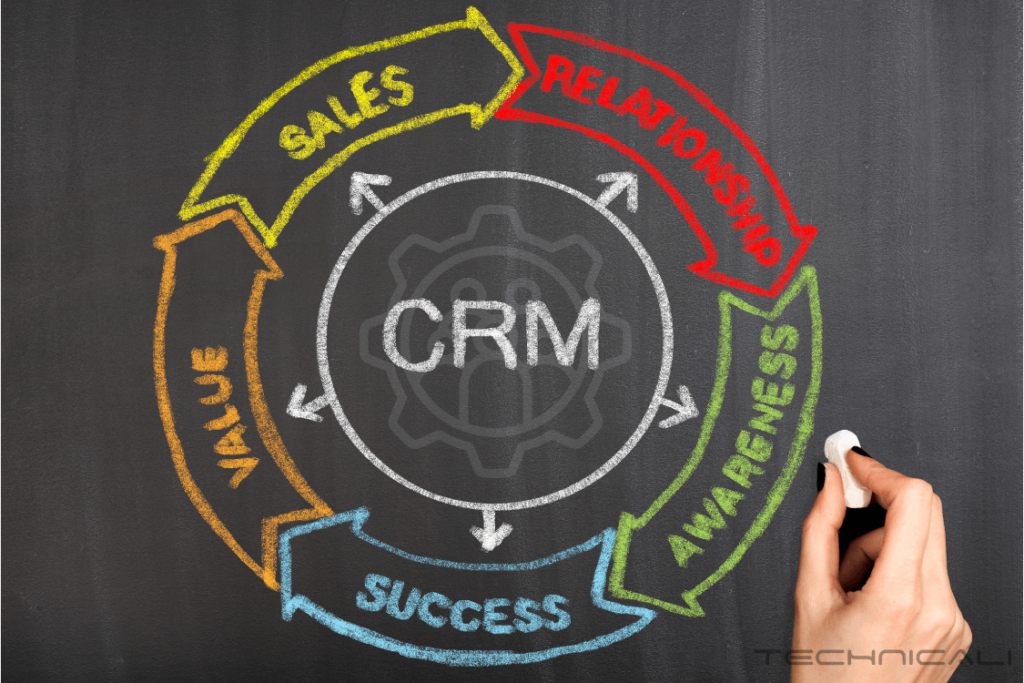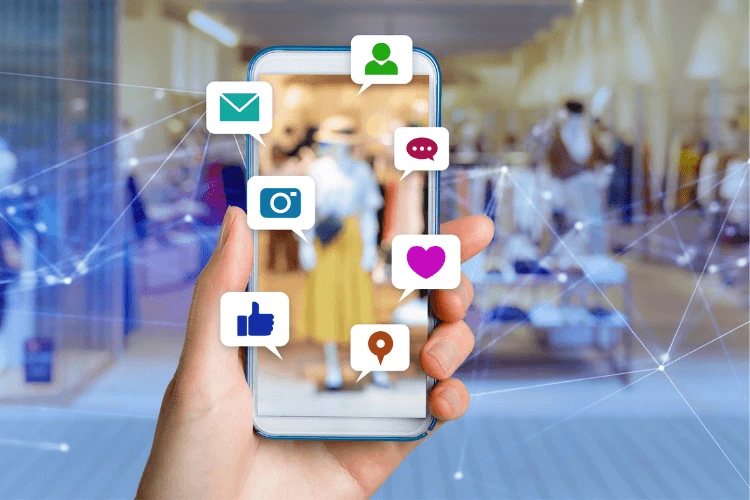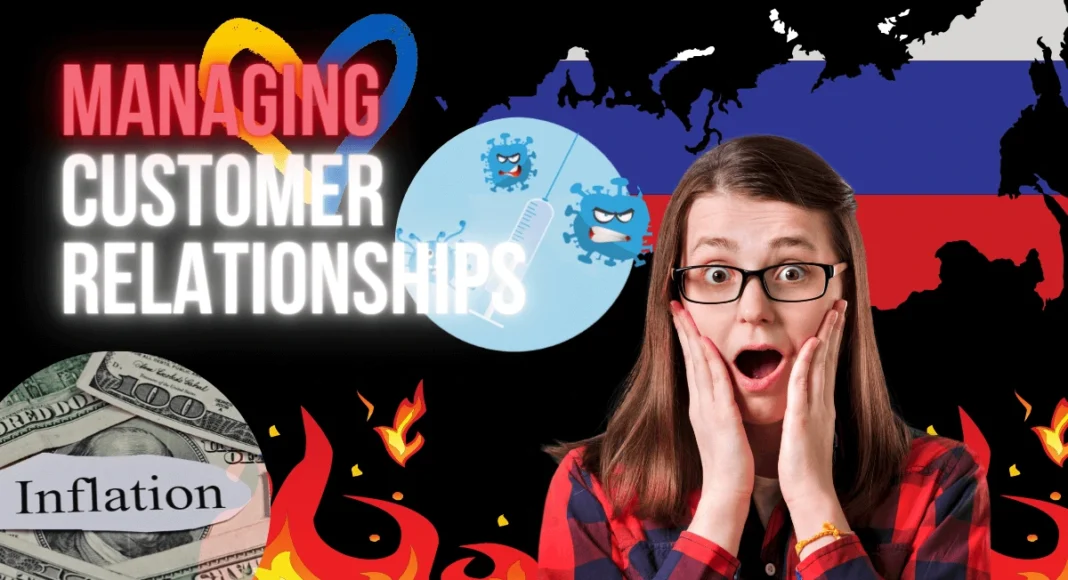Contents
- 1 Facts about the impact of covid on small businesses
- 2 Introduction
- 3 How to Manage Relationships during Challenging times
- 4 1. Emotional Intelligence
- 5 2. A Sense of Humor
- 6 3. Personalized Communication
- 7 4. Positive Attitude and Words
- 8 5. Omnichannel Communication
- 9 6. Creative Problem-Solving Approach
- 10 7. Patience
- 11 8. Privacy and Safety
- 12 9. Using Automation and Integrations
- 13 10. Workforce Diversity
- 14 Conclusion
Facts about the impact of covid on small businesses
These past few years have been difficult for companies worldwide. People were and still are struggling to keep their businesses afloat.
The number of active business owners in the USA decreased by 3.3 million over 2 months from February 2020. African-business activities were also hit hard and dropped by 41%.
Similarly, Latinx business and Asian business activities plummeted by 32% and 26%, respectively. Further research claimed that the active business owners’ activities remained all-time low in May and June at 15% and 8%, respectively.
Small businesses especially took a significant hit. They were the worst affected, and many small businesses even closed down during the covid pandemic.
A survey conducted with 5,800 small retail businesses explored the economic impact of the pandemic. It also analyzed the financial fragility of such small-scale companies during these challenging times. 43% of small businesses were temporarily closed and were less optimistic about reopening at the end of 2020.
These businesses were hit dramatically because they were low on cash at the start of the pandemic itself. They had to drastically cut their expenses, take a loan or claim bankruptcy to survive the pandemic.

In America alone, 50% of employees are employed by small firms. Hence employment was hit the worst and had fallen by 40%.
Introduction
Our world today is facing many crises one after another. First, it was covid; second, it was lockdown; third, it was vaccination, and now it is the Russia-Ukraine war conflict. Whether it is social problems, war, or a new variant of covid, these problems are ongoing. Some play will always be there, impacting customers and businesses around the world.
With various sanctions that the war has placed and double-triple vaccination shots being taken, our lives are turning in diverse directions. For any business, customers are their everything. And with so much going on, our prospective customers get busy doing other things.
Maintaining relationships with customers becomes essential for the business to keep your prospective customers in the loop. Managing customer relations during covid-like situations is challenging for both the company employees and the customers.
Using customer relationship management tools can help you maintain customer relations.
Using a CRM solution

A customer relationship management or CRM solution is software that helps you build processes to nurture and maintain various business relations, both inside and outside the company. A CRM system manages relations and helps in the overall business working.
It gives a holistic overview and helps run the entire business singlehandedly. You can do it all with a CRM solution, from storing customer data to sales to customer service to business development.
Some benefits of the CRM solution system:
- Customer management
- Data security and storage
- Increased sales and profitability
- Central access to all the customer data from anywhere
- Ideal for remote teams
- Forecast and analytical tools
If you plan to invest money in buying a CRM solution system, check our article explaining the seven best customer relationship management tools to get an in-depth understanding.
While customer relationship management software can help your business, some soft skills are needed to amplify your performance.
How to Manage Relationships during Challenging times
We can control certain things in business, and there are certain things we can’t control. Keep your focus on changing things under your control; otherwise, you will encounter stress, anxiety, declined productivity, and burnout.
Below is the list of things that we can alter in our business to improve customer relationships not only when the times are stressful but something which is evergreen.
1. Emotional Intelligence

Emotional intelligence is vital for any business structure. It usually comprises four aspects: self-awareness, social awareness, self-management, and relationship management.
Elements of EI
- Awareness: self as well as social
Managing relations starts with being self-aware and realizing one’s strengths and weaknesses. It is valid for both the business as well as individuals.
On the other hand, social awareness involves getting cues from observing others’ expressions, body language, and mood. Understanding these subconscious cues can help us respond appropriately.
- Self-management
Self-management is the art of curbing the impulses to reply without thinking. It includes the management of quick replies and impulsive feedback. To manage our relationships with customers, self-management is critical.
- Relationship management
Relationship management combines self-awareness, social awareness, and self-management to successfully manage interactions with everyone related to the company. Relationships, especially those with customers, take a lot of patience, time, and technical know-how. The strategies, techniques, and know-how together form the basis of relationship management.
3 tips to master elements of emotional intelligence
- Brush your communication skills
Observe how you communicate with everyone on a daily basis. Take note of your communication pattern during both stressful and happy circumstances. Identify your strengths and weaknesses in your communication.
Now, the next time you communicate with customers or fellow employees, make an effort to have more constructive communication in your dialogue while steering clear of destructive ones.
- Feedback
Be a sport and ask for feedback regarding your communication with others. While it can be tough accepting your weaknesses, it is the best opportunity for you to grow and improve your emotional intelligence.
When taking feedback, ensure you process all the information while taking hold of your emotions. Stop yourself from making an impulsive reply, which may leave you apologetic later.
- Be empathic and don’t avoid conversations
To build better relations, you should be empathetic towards others. You may have heard many great things about being empathic, and trust me; they are all true. For efficient emotional intelligence, you have to cultivate the skill of thinking from others’ points of view. Put yourself in their place, and you will start understanding communication better.
Also, never get in the habit of running from difficult conversations. There are going to be many angry and demanding clients. Just jump into the conversation head-on while carrying your emotionally intelligent warriors with you.
2. A Sense of Humor
A sense of humor is essential to building sustainable relations. Studies have found that meetings or conversation filled with humor and laughter result in increased production and brings in more innovative solutions.

Further, a person who has a sense of humor and can crack jokes is more competent and confident, according to research conducted by Harvard and the University of Pennsylvania.
Employees who can make their customers laugh are bound to bond better and build lasting relations. Laughing together releases endorphins that help people feel pleasurable and calming vibes. These feelings make people feel safe and secure, which is essential for long-term customer relations.
Now, don’t go on telling all the customers some joke you learned from the 1000 funny jokes book. No one likes jokes while you are in the middle of a serious conversation. Know when to be funny.
Test the waters and customers’ moods before showing them your humorous side. It will not work if the customer is angry about a product default and you go on telling him funny stories. Show your humor but know the right time, the appropriate way, and your boundaries.
3. Personalized Communication

Personalizing the communication and tailoring it to fit the customers is the best possible way to manage customer relations and build customer loyalty. With the right marketing strategies and customer knowledge, you can increase your customer retention.
The digital transformation has changed the way we build customer relations. Modern communications, CRM technology, and other tools ensure efficient customer relationship management.
People have become accustomed to personalized communication. It makes them feel special and valuable. With modern CRM solutions and other automation tools, sending personal messages is easy and time-saving.
You just need to tweak or change some settings, and voila, you can send thousands of automated personalized messages to your customers at the appropriate time to convert more sales. This personalized communication is the key to building long-term customer relations, increasing customer retention, and engaging them.
How to personalize your Communications?
- Marketing personalization
Create accessible opt-in forms and collect customer emails. Send them personalized and relevant emails. Give details about the products they would be interested in buying. Use the available data and segregate the email list based on countries, regions, states, etc. Know what is going on in that area and draft your messages accordingly to better connect with your audience.
- Trace leads
Know exactly what is working and what is not working for your business. Have a constant eye on which channel brings in the most prospects and leads. Leverage that channel by continuously putting in content and approaching customers with personal messages. Check-in on cold leads who have not responded for a while. Always ask for feedback and have real-time chats if necessary.
- Customer knowledge
Know your customers well. Research and find out what exactly a customer wants in a product. Then send your prospect emails explaining how your product can help satisfy their needs. Have spontaneous customer service that solves any customer queries within no time. Adopt a CRM solution to collect, store records, and access customer data whenever needed.
4. Positive Attitude and Words

Positivity has a lasting impact on building customer relations. Our words and behavior towards customers can make or break sales. Always surround yourself with positivity. Try to speak positive words, show positive body language, and behave positively as much as possible.
Now we know all days are not the same and we can’t be happy 24×7. Some things are bound to ruin our mood, which can be easily sensed in our communication. While everything can’t be positive, there is a positive aspect to any situation. Try to concentrate on them.
Words and the tone of communication quickly point out the customer’s mood. Identify these hidden cues and use them to build customer relations. We can easily know when people talking on the other side of the phone are troubled.
At such times use positive comments and thoughts to make them feel better. Even a small positive comment can change their mental state or overall well-being. Once a negative mindset is replaced with positivity, leads quickly turn into loyal customers.
Things you should do to increase positivity
- Speak very slowly but firmly. Ensure utter clarity about whatever you are communicating.
- Be precise and use the power of simplicity to make customers understand your company, products, or any queries.
- Use simple words and phrases that even a child can understand. After an exhausting day, no one wants to sit with a dictionary or google a rather difficult word.
- Make a point to show your gratitude by saying thank you at the end of every conversation, regardless of sales.
5. Omnichannel Communication

Omnichannel communication is an excellent method of unifying the overall customer experience across diverse communication channels. It is a centralized system that optimizes communication and interactions from a single system.
Omnichannel provides a variety of ways for your customers to communicate with you. It includes social media, live chats, blogs, etc. Customers can approach any channel to connect with the business. Hence, business needs to be equipped with the right tools and technology to maintain customer relationships.
Investing in superior omnichannel technology can help companies stay connected with their customers, gain the proper customer knowledge, increase customer retention, and decrease customer churns.
Omnichannel is a continuous journey that focuses on consistent customer experience across all touchpoints, from before sales to after service and everything in between.
Companies that invest in CRM solutions and other related technologies acquire long-term relationships and customer loyalty.
How to build a practical omnichannel communication framework?
- Find various communication channels
There are a variety of communication networks that can bring in more prospects and leads for your company. Play around with different online channels, namely social media, blogs, catalogs, emails, etc., and offline channels example, phone calls, SMS, etc.
- Create an effective marketing strategy
After analyzing various communication channels, understand the channel that the majority of your target audience prefers. Use the channels to increase your brand presence, customer engagement, and customer knowledge base. You can also use a combination of channels to expand your reach and customer retention.
- Centralize the technology
Use a centralized technology to manage all your customer data and conversation. Always focus on giving a high-level customer experience to all the customers across all the channels. During challenging times like the global pandemic, it is necessary to always stay connected with your customers and keep them updated. This helps build customer loyalty and maintain customer relations.
The best way to centralize your business and omnichannel communication is by adopting CRM technology. CRM solutions will centralize and integrate all your tools to build long-term customer relationships.
6. Creative Problem-Solving Approach
Creative problem solving can be a skill that helps build customer loyalty and lasting business relationships. Creativity is coming up with unique and original ideas that can solve a potential problem.

You require a consistent environment of innovation and the ability to constantly improve oneself for creative problem-solving.
Creative problem solving goes beyond conventional reviews and thinks out of box solutions for efficient workflow, brand positioning, product innovation, and communication problems. It includes identifying a problem, brainstorming, coming up with a solution, resolution planning, and practical implementation.
Steps in creative problem-solving include:
- Clarify
This stage includes showing empathy towards customers’ problems. Stepping in their shoes and identifying key problem areas. Do thorough research and ask questions to gain deep insights about customers’ issues. This will, in turn, also increase your customer knowledge.
- Ideate
You brainstorm and develop different innovative ideas to solve the customer problem in this stage. You can come up with many innovative ideas for 1 problem statement. Each idea should be listed and evaluated correctly.
- Develop
Each idea is tested for feasibility and evaluated based on its costs and other related variables. Various tests and experimentation take place to come up with a viable solution. Other techniques like open critique and prototyping are also used to check the true potential of the solution.
- Implement
Here the solution further undergoes rigorous tests and evaluations. The experiment continues to find one refined solution. The entrepreneur then implements the advanced solution and takes consistent feedback to ensure the solution’s viability.
7. Patience

Customer relationship management is built on patience. Like every good thing in the world, building lasting customer relations takes time, patience, and effort. This is the most essential soft skill you need to build any kind of long-term customer relations.
You need to be patient and understanding while an angry customer is ranting harsh words about the product, company, or sometimes about you. Being patient helps you better understand the customer’s dilemmas and find effective solutions to customer problems.
Retaliating the customer’s query with anger can lead to more problems and a bad reputation. Even if the customers are rough, you have to use a polite and gentle tone while explaining your side or giving a solution.
How to be patient?
- Take a long breath. It helps us relax and calm down during increased pressure. Our brain fog clears, and we can concentrate on what to do next.
- Change your focus and understand the customer’s problems, not how he delivers them.
- Listen to all the customers ranting and identify the critical problem areas. Let the customer finish the talking without interrupting him in the middle of the conversation.
- Deliver your answers and solution to the customer in the best and most polite way. Even if the customer is irate, you give the best customer service to them.
8. Privacy and Safety

Security and data privacy during war-like situations or any situation, on the contrary, is the most crucial concern for customers. With the number of data leaks and theft scandals coming out in recent years, customers are wary of sharing their personal information with businesses.
When a business collects customer data, it is the duty and responsibility of the business to defend the privacy and security of customer data.
Data privacy and data security are two separate terms that are often used interchangeably. Data security is all about protecting customer information from being stolen or used illegally. At the same time, data privacy is more about respecting customer data and not selling it to outside parties without customer consent.
How do you ensure privacy and security?
- Guarantee you protect the privacy of your customer data with Customer Identity and Access Management (CIAM).
- Comply with other data privacy and security regulations.
- Make your communication clear and transparent, and exclude any loopholes. Give customers complete control of their data.
- Use intelligent CRM technology which has solid data privacy and security tools.
9. Using Automation and Integrations

Automation can help cultivate more profound and long-lasting customer relations. Automation is the act of involving equipment, process, and system to work with little human input or involvement. It helps streamline the entire business process to run smoothly without any errors.
Effective integrations and automation can enhance your workflow and support you in building customer loyalty. Integrated automation is unifying various software working separately under one central platform.
One of the most notable examples of automation and integrations is Microsoft Dynamics. It aids users with a single source option to operate and integrate more than 200 apps, including Outlook, Google contacts, Gmail, Mailchimp, and other Microsoft products.
Some benefits of powerful integrations and automation are:
- Improved accuracy with fewer faults
- Enhanced workflow and operational efficiency
- Saves a lot of time and resources
- Better consistency in performance and time to focus on important things.
10. Workforce Diversity
The global pandemic has changed the outlook on managing relationships in covid, both inside and outside the organization. The fade of remote work, which started during the covid lockdown, continues to grow. More and more employees prefer remote working for various reasons. While beneficial, it comes with the challenge of managing workforce diversity.

Workplace diversity means individuals of various genders, ethnicities, races, ages, religions, sexuality, mental conditions, and physical appearance working in the same company.
Workplace diversity accepts things that make other individuals unique and different from you. Having a large workplace diversity helps target and build customer relations from different countries, religions, and races.
Benefits of diversity in the workplace
- Creates and promotes an open culture in the workplace
- Increases creativity and transparency
- Understand and accept differences in opinion and perspective
- Increasing tolerance towards different people
- Customers and staff who are from the same area, religion, or ethnicity better connect with each other
Conclusion
The covid crisis has made us aware of the significance of customer relations in any business. We have understood the true essence of any business lies in cultivating long-term relations with customers and retaining them in the business. Building relations will help business growth even during downtimes like a pandemic, wars, or other crises. The easiest way to build lasting relations is by understanding and thinking about customer wants and providing valuable services to them no matter how the situation is.


